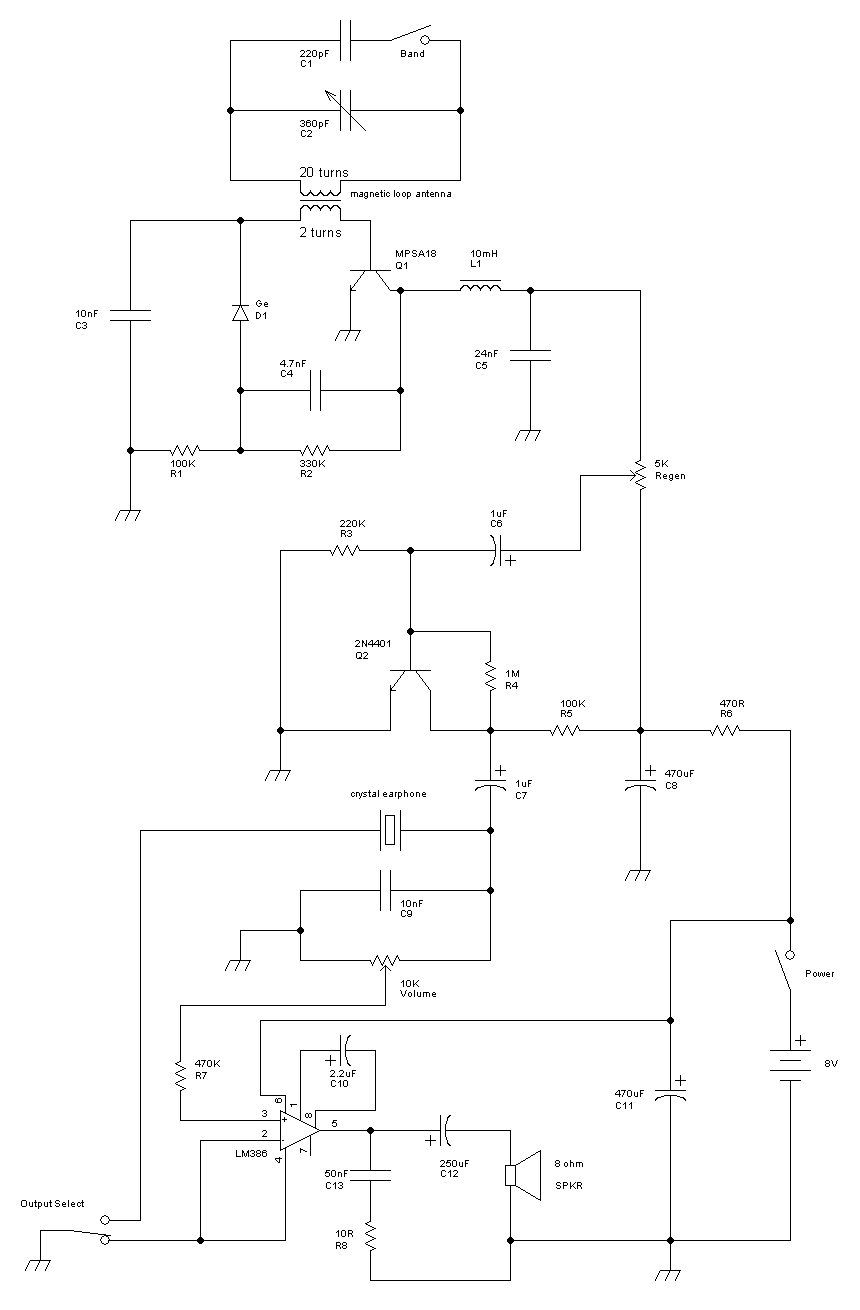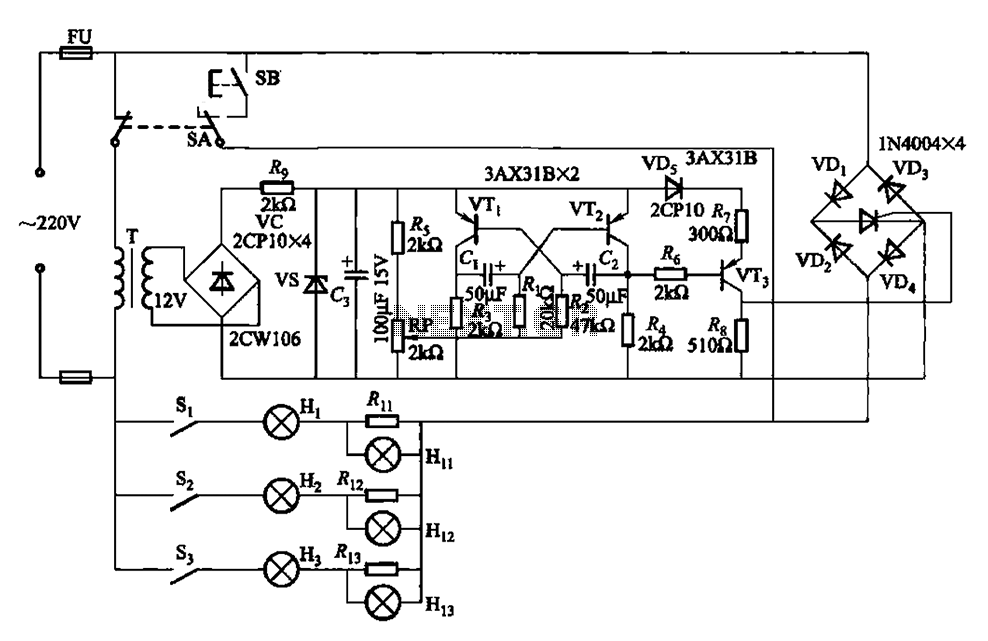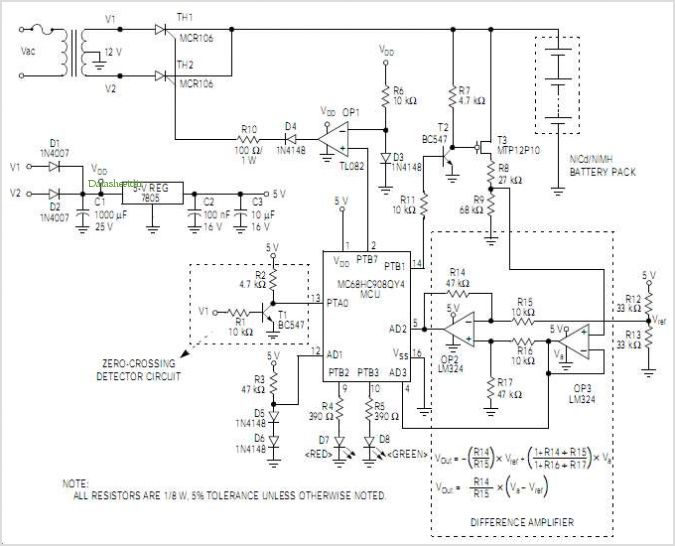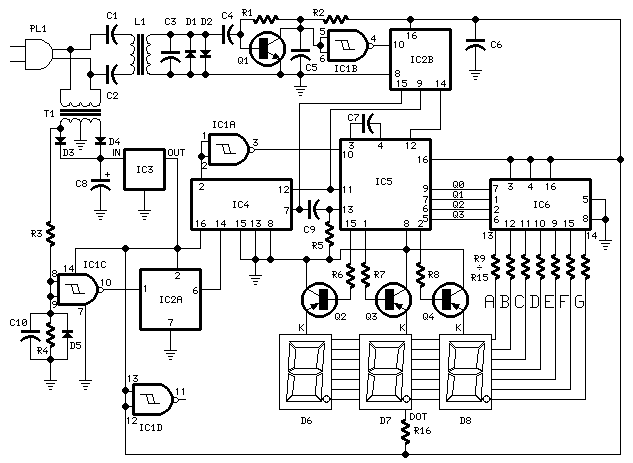
Using C-MOS IC count divider circuit
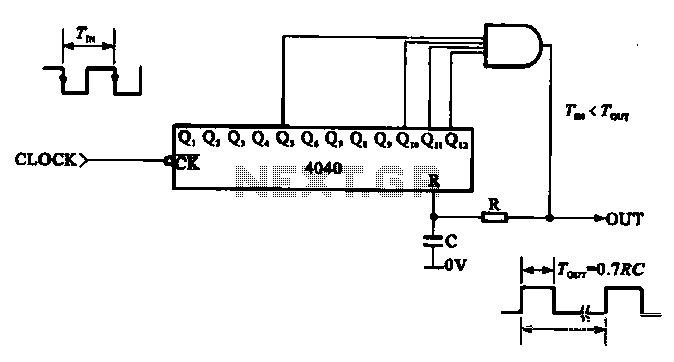
This document illustrates the application of a CMOS integrated circuit (IC) count divider, specifically the TC4040, which functions as a 12- or 14-bit counter. The circuit can be configured to achieve various frequency division ratios, such as a 1:3600 divider, allowing for the transformation of a one-second signal period into a pulse signal that represents one hour.
The TC4040 is a versatile CMOS binary counter that can be employed in a variety of applications, including timekeeping, frequency division, and digital signal processing. The device operates by counting the number of input pulses and providing a corresponding binary output. It features a cascading architecture, allowing multiple TC4040 chips to be connected in series to extend the counting range beyond 12 or 14 bits.
In practical applications, the TC4040 can be configured to divide an input frequency by a specified ratio. For instance, in a 1:3600 divider configuration, the circuit takes an input clock signal (such as a 1 Hz signal) and produces an output pulse every hour. This is particularly useful in applications where long-duration timing is required, such as in digital clocks or timers.
The circuit typically consists of the TC4040 IC, a power supply, and input/output connections. The IC requires a stable DC power supply, usually between 3V to 15V, depending on the specific model and application requirements. Input signals are fed into the clock pin of the TC4040, while the output can be taken from any of the defined output pins corresponding to the desired count.
Additional components such as capacitors and resistors may be included in the circuit to filter noise and stabilize the operation of the IC. Proper layout and design considerations should be taken into account to minimize interference and ensure reliable operation.
Overall, the TC4040 CMOS counter is an effective solution for implementing frequency division in electronic circuits, providing flexibility and precision in digital counting applications.Shows the use of C-MOS IC count divider circuit, as in Fig. LC main TC4040, wash it is a 12, 14 -bit counter, the circuit can be made using any of the frequency dividing ratio of the circuit, for example, can be made 1 / divider circuit 3600 (signal of one second period may be a period of 1 hour into a pulse signal amount).
The TC4040 is a versatile CMOS binary counter that can be employed in a variety of applications, including timekeeping, frequency division, and digital signal processing. The device operates by counting the number of input pulses and providing a corresponding binary output. It features a cascading architecture, allowing multiple TC4040 chips to be connected in series to extend the counting range beyond 12 or 14 bits.
In practical applications, the TC4040 can be configured to divide an input frequency by a specified ratio. For instance, in a 1:3600 divider configuration, the circuit takes an input clock signal (such as a 1 Hz signal) and produces an output pulse every hour. This is particularly useful in applications where long-duration timing is required, such as in digital clocks or timers.
The circuit typically consists of the TC4040 IC, a power supply, and input/output connections. The IC requires a stable DC power supply, usually between 3V to 15V, depending on the specific model and application requirements. Input signals are fed into the clock pin of the TC4040, while the output can be taken from any of the defined output pins corresponding to the desired count.
Additional components such as capacitors and resistors may be included in the circuit to filter noise and stabilize the operation of the IC. Proper layout and design considerations should be taken into account to minimize interference and ensure reliable operation.
Overall, the TC4040 CMOS counter is an effective solution for implementing frequency division in electronic circuits, providing flexibility and precision in digital counting applications.Shows the use of C-MOS IC count divider circuit, as in Fig. LC main TC4040, wash it is a 12, 14 -bit counter, the circuit can be made using any of the frequency dividing ratio of the circuit, for example, can be made 1 / divider circuit 3600 (signal of one second period may be a period of 1 hour into a pulse signal amount).

